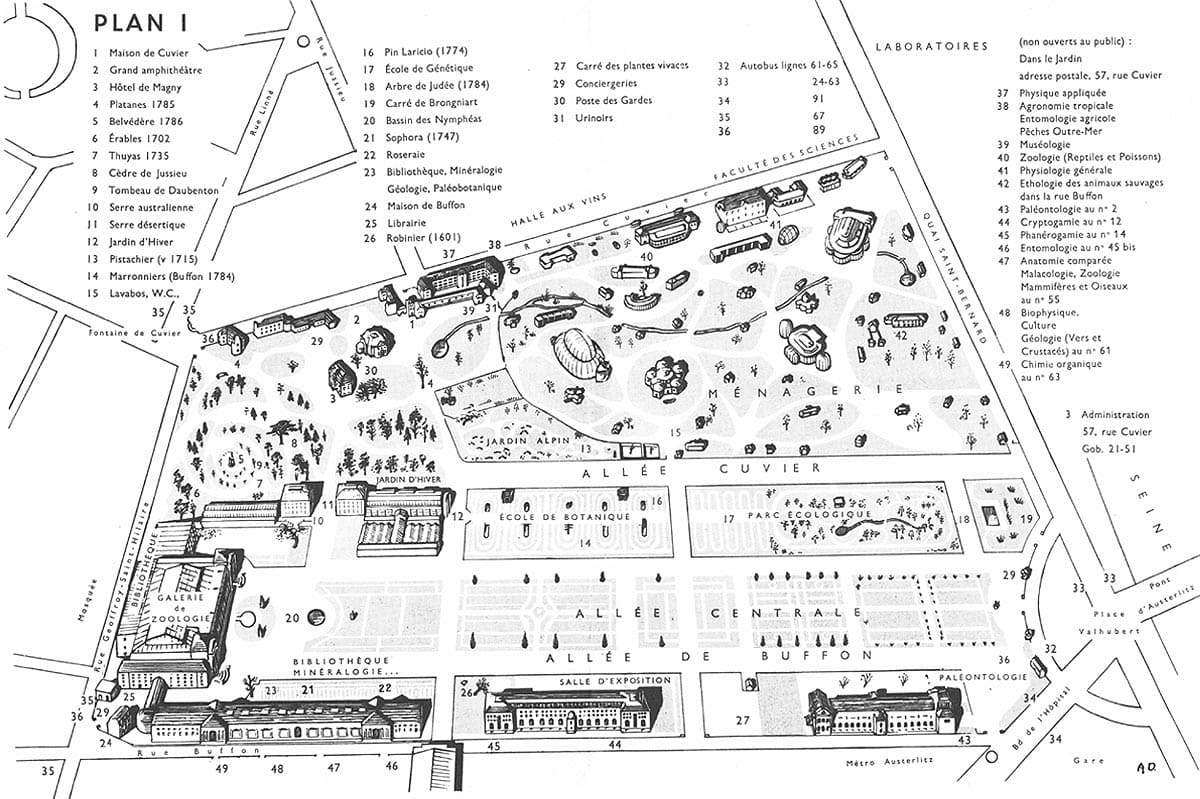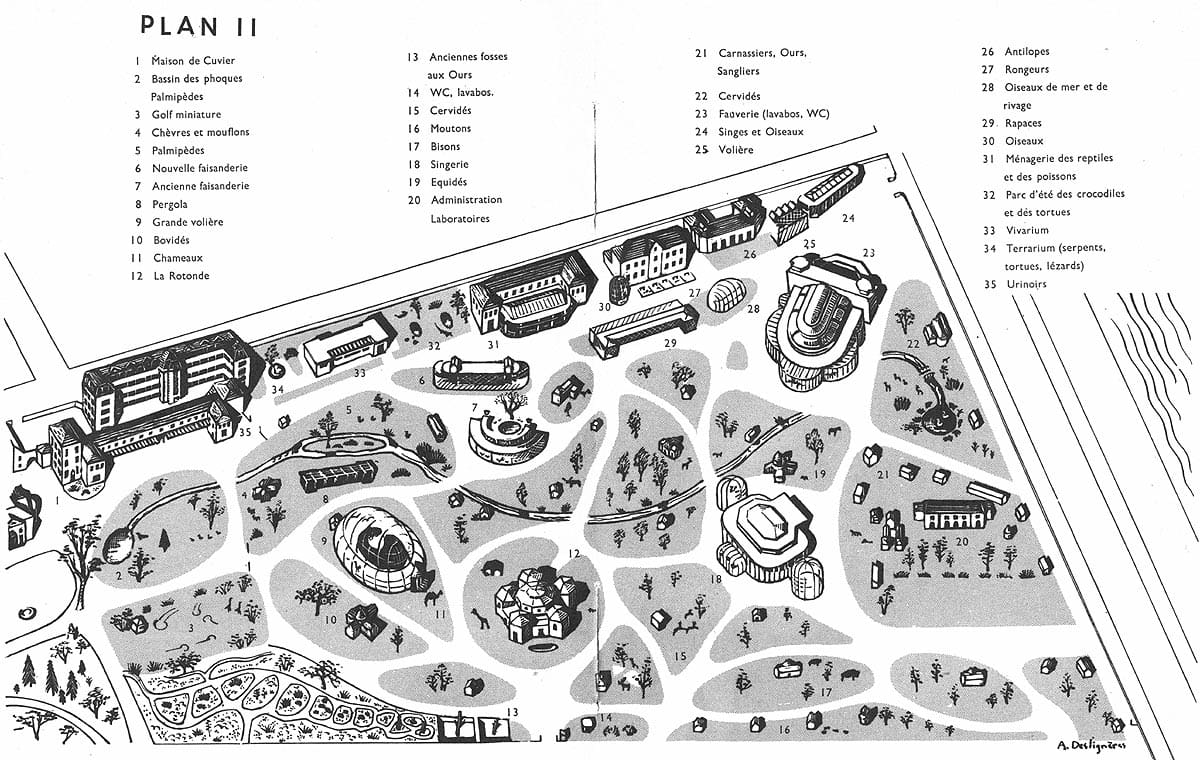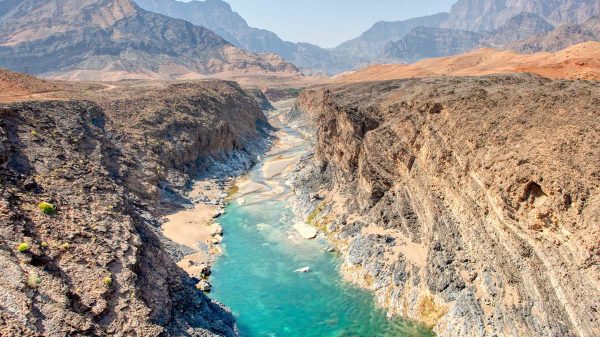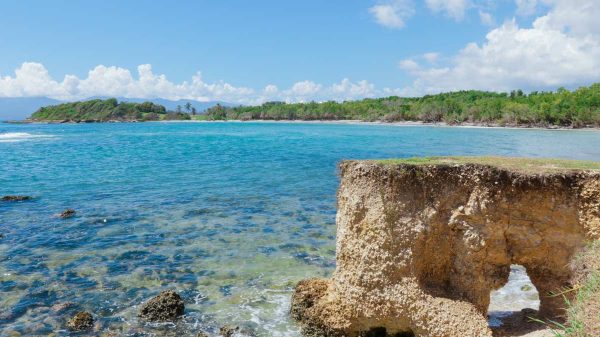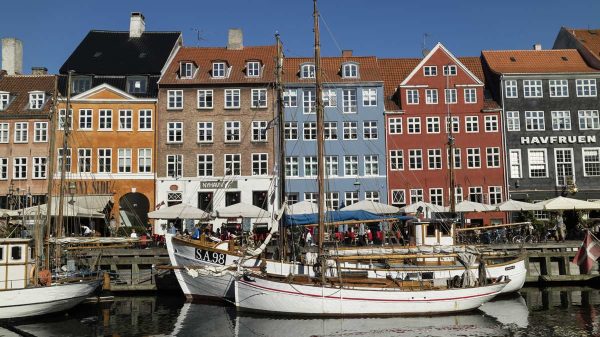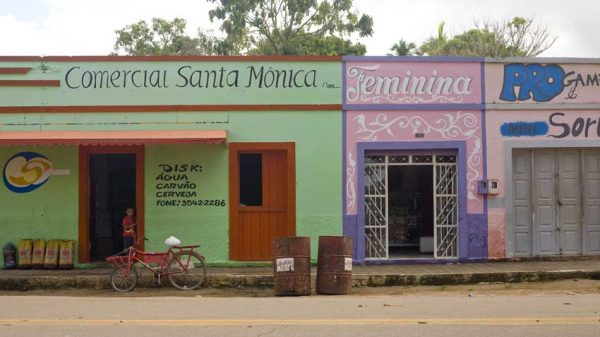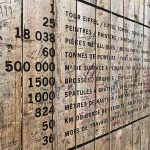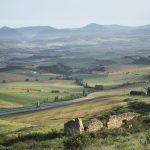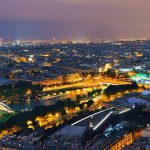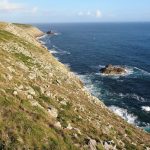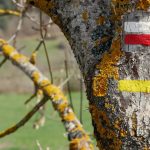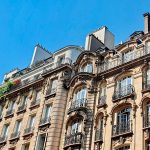Villes.fr, dans ses publications consacrées à la ville de Paris, vous propose une numérisation du Guide général du jardin des plantes, ménagerie, serres, galeries. Un petit livret d’époque (1959-1965) riche d’enseignement sur le Jardin des Plantes de Paris.
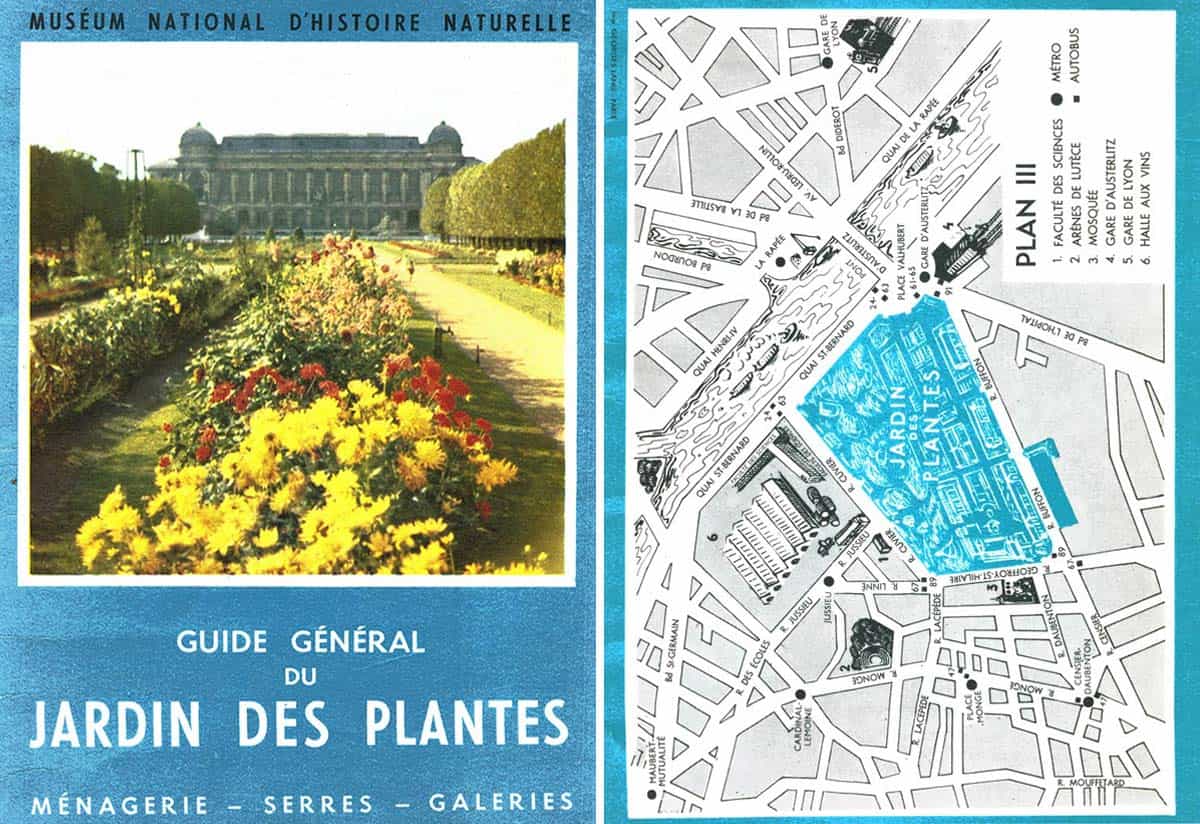
Nous avons déniché ce petit livret lors d’une bourse aux livres. Curieusement, aucune date de publication n’est mentionnée. Cependant, il est indiqué que le directeur du Muséum National d’Histoire Naturelle de l’époque était Roger HEIM. Également professeur au sein du même établissement, les archives indiquent qu’il y a officié comme directeur de 1951 à 1965. En fin de livret, des tarifs à divers abonnements sont indiqués en Nouveaux Francs, monnaie créée fin 1958. Il est donc fort probable que ce guide officiel fut édité entre 1959 et 1965.
Historique
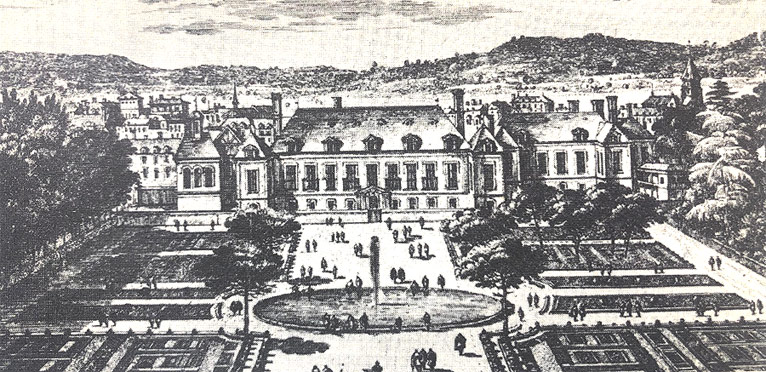
Le Jardin des Plantes et le Cabinet du Roi au XVIIème siècle
Le Jardin Royal des plantes médicinales, fondé en 1635 sur l’emplacement qu’il occupe actuellement, permettait aux étudiants en médecine aux apothicaires de compléter leur enseignement livresque par des études pratiques sur les plantes, les substances extraites de celles-ci et sur l’anatomie humaine. Le Jardin deviendra bientôt un centre mondialement renommé d’investigations scientifiques, qu’illustrent notamment le botaniste Tournefort et la célèbre famille des Jussieu. Dufay, qui découvrit les premières lois relatives à l’électricité, réorganisa le jardin de 1732 à 1739, créant des serres pour les plantes exotiques et agrandissant le Cabinet du Roi où étaient conservées les premières collections d’Histoire Naturelle rapportées des contrées lointaines par les naturaliste-voyageurs.
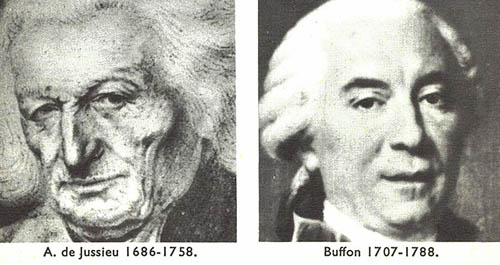
Au XIXe siècle, de nouveaux bâtiments y sont construits, de grandes découvertes y sont faites. Lamarck, Lacepède, Georges cuvier, Latreille et autres jettent les bases de la classification moderne des animaux ; Lamarck et les Jussieu perfectionnent celle des végétaux. Thouin introduit de nombreuses plantes exotiques aujourd’hui répandues dans nos jardins. Haüy fonde la cristallographie. Lamarck développe la théorie de l’Évolution ; Sa pensée et celle de Geoffroy-Saint-Hilaire influencent les grands esprits de l’époque, comme Balzac, Michelet ou Sainte-Beuve. Après que G. Cuvier eût fondé la science des animaux disparus, Adolphe Brogniart crée celle des plantes fossiles et Quatrefages rénove l’anthropologie. Flourens puis Claude Bernard illustre la chaire de physiologie. Fourcroy, Vauquelin, Gay-Lussac, Chevreul, Frémy font faire des progrès décisifs à la chimie et Henri Becquerel découvre la radio-activité qui ouvre le domaine de la Physique atomique. Bien d’autres noms seraient à citer : les Miine-Edwards et E. Perrier en Zoologie, Van Tieghem, Naudin et Tulasne en Botanique, Daubrée en Géologie…
Au XXième siècle, l’activité scientifique du Muséum s’étend à toute la France d’outre-mer, que prospectent ses naturalistes infatigables. Aujourd’hui, 23 grands laboratoires, groupant plusieurs centaines de chercheurs, sont dirigés par des professeurs qui donnent également un enseignement librement accessible à tous.
Plan n°1 et légende
La Ménagerie
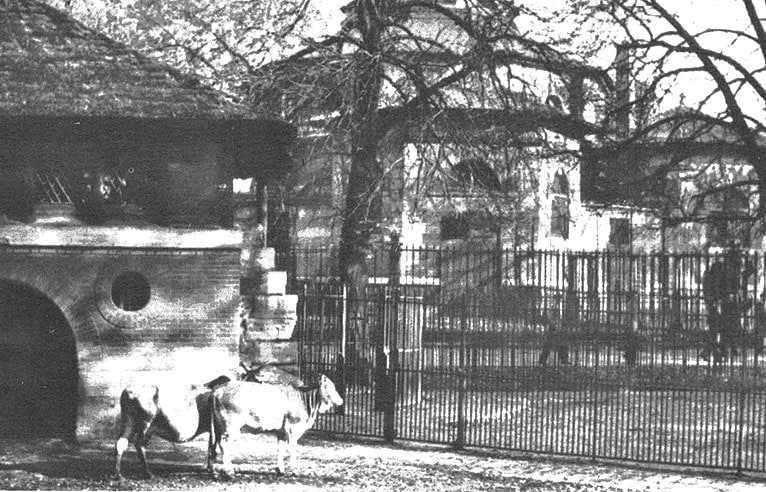
La Ménagerie : couple de Zébus devant la “Ruine” ; au fond, la Rotonde
Plan n°2 et légende
Quatre entrées principales permettent d’accéder à la Ménagerie ; conformément au numérotage marqué sur le plan (ci-après), nous pénétrerons par l’entrée située près de la Maison de Cuvier (N)1), en face de laquelle se trouve le bassin des Phoques (2). A côté s’étendent des pelouses où s’ébattent divers palmipèdes, puis le terrain de golf miniature (3), enfin des parcs à mouflons : mouflons à manchettes et de Corse (4).
Avant de commencer la visite, rappelons qu’il est interdit d’exciter les animaux en captivité et de leur présenter des objets ou des vivres susceptibles de leur être nuisibles.
Les guichets franchis, on laissera à gauche le Vivarium (34) et les parcs d’été des crocodiles et des tortues, visités au retour. On longera, à droite, la petite rivière où se baignent de nombreuses espèces de Palmipèdes (5) et on atteindra la nouvelle Faisanderie abritant des Ibis, des Hérons, des Aigrettes, des Butors, des Lophophores et des Paons (6); l’ancienne Faisanderie (1827) loge, autour de son bassin central, des Mouettes et des Goélands et, sur son pourtour extérieur, des Faisans, dont quelques belles espèces assez rares : Faisans de Lady Amherst, Faisans Mikado, Faisans Leucomèle (7); de petits parcs voisins groupent de grands Echassiers (Cigognes, Jabiru, Marabouts). Traversant ensuite la rivière, on atteindra la Pergola (8) avec ses Perruches, ses Callopsites, ses Paddas, puis la Grande Volière (1888), couvrant près de 1.000 mètres carrés, où s’ébattent des Grues cendrées, des Grues couronnées, des Bernaches (9).
Près de la Grande Volière, un romantique pavillon, imitant une ruine (1802), abrite des Chameaux et des Dromadaires (10); aux alentours sont les parcs des Bovidés : Buffles de Roumanie et d’Egypte, Yacks, Zébus (11).
Le vieux bâtiment de la Rotonde (1802) abrite des Eléphants d’Asie et d’Afrique, des Hippopotames, des Autruches, qui sortent dans les cages extérieures pendant la belle saison (12). A proximité sont groupés les parcs (15) des Cerfs de France, des Cerfs Axis et Pseudaxis, des Cerfs Rusa et d’Eld, ainsi que des Cerfs Cochon et diverses variétés de Daims indigènes, isabelles, tachetés, blancs ou noirs.
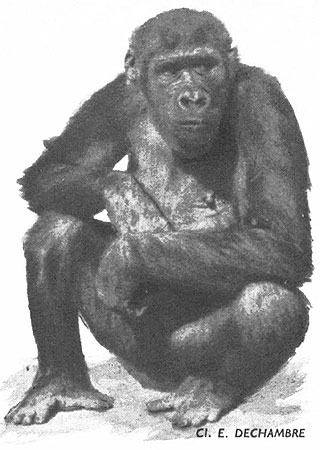
Femelle de Gorille (Afrique équatoriale)
En sortant de la Singerie, le visiteur contournera par la droite les parcs des Équidés : Cheval sauvage, Kiang (19) onagre, passera devant les cages des Ours, des Loups, des Sangliers, des Phacochères, des Potamochères, des Renards, des Chacals et des Blaireaux (21) et arrivera devant la Fauverie (24). Celle-ci, construite en 1937, renferme, dans ses cages extérieures ou intérieures, Lions, Tigres, Panthères, Pumas, qui rencontrent particulièrement les faveurs du public.
Certains fauves du Jardin des Plantes furent célèbres dans tout Paris, comme ce lion, venu de la Ménagerie Royale de Versailles, qui avait un chien pour compagnon inséparable, ou cet autre, qui, dans ses élans d’amitié, se pressait tendrement contre son gardien.
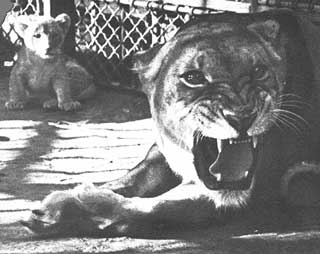
La Fauverie : une lionne et un de ses lionceaux.
Une petite volière (29) est réservée aux oiseaux de mer et de marais de notre « pays Mouettes, Poules d’eau, Foulques, Cormorans. Plus loin, un long baraquement (30) donne asile à de nombreux Rapaces : Aigles, Pygargues et Vautours de France, Condors des Andes, Trigonoceps, Grands-Ducs et Chouettes. Face aux Rapaces se trouvent des Guanacos et des Lamas de l’Amérique du Sud et quelques Dindons sauvages également originaires d’Amérique.
Ménagerie des reptiles
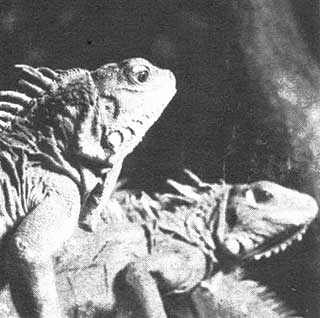
Iguanes (Venezuela)
Dans la salle des aquariums où l’on passe ensuite sont réunis des poissons des rivières de France, soit indigènes (Carpes, Brochets, Chevesnes…), soit acclimatés (Perches soleil, Truites arc-en-ciel, Orfes, Poissons-Chats) et des poissons exotiques d’ornement : Xiphos, Guppy, Platys, Tétras…
De retour dans le vestibule, le visiteur s’arrêtera devant les élégantes petites tortues américaines et les Axolotls : Duméril, en 1867, découvrit, à la Ménagerie même, que l’Axolotl était la larve aquatique d’une Salamandre terrestre du Mexique ayant la propriété de se reproduire normalement à l’état larvaire, mais pouvant retrouver,. dans certaines circonstances, sa forme primitive de Salamandre, grâce à une croissance plus prolongée liée à l’activité de la glande thyroïde.
L’étude de l’Axolotl, d’une haute portée scientifique, est un exemple des services rendus à la science depuis plus de 150 ans par la Ménagerie du Muséum ; celle-ci a fourni à Georges Cuvier et E. Geoffroy-Saint-Hilaire une grande partie du matériel d’étude nécessité par leurs célèbres recherches d’Anatomie comparée. C’est encore la Ménagerie qui a permis à Frédéric Cuvier de rénover la psychologie animale. Elle continue aujourd’hui à jouer un rôle essentiel dans le domaine physiologique : nourriture, comportement, pathologie, longévité des Vertébrés. Elle est ouverte, d’autre part, aux artistes animaliers, photographes et cinéastes, qui y découvrent des scènes très diverses et toujours renouvelées.
Le Vivarium
Au Vivarium, ménagerie consacrée aux petits animaux, on s’efforce de reconstituer le milieu’ naturel de chaque espèce, avec son sol, sa végétation, sa température et son éclairement; souvent, cette reconstitution permet à l’animal de reprendre, sous nos yeux, ses mœurs habituelles.
Bien des animaux du Vivarium, surtout les Invertébrés, ont une vie très brève; dans une même cage se succèdent parfois plusieurs espèces au cours de l’année; nous n’en mentionnerons ici que quelques-unes, parmi les plus curieuses.
Des Invertébrés, nous citerons d’abord les Achatines, Mollusques terrestres de la forêt tropicale de la Côte-d’Ivoire, pouvant atteindre 20 cm. de long, et les Téraphoses, Araignées de la Guyane Française du groupe des Mygales, qui ont une taille suffisante pour s’attaquer aux petits rongeurs et même aux Oiseaux; leurs pattes peuvent mesurer jusqu’à 10 cm. de long. Le Pandinus imperator, originaire de l’Afrique tropicale, est le plus grand de tous les Scorpions présentés au Vivarium (15 à 18 cm. de long). Parmi les Insectes, l’Enrycnema goliath est un grand phasme de la Malaisie, dont la femelle a la couleur des feuilles qui l’entourent, tandis que la larve présente la forme et la teinte des rameaux qui lui servent de support (phénomène de mimétisme). Les Anthia sexmaculata, grands coléoptères carabiques du Sahara, ont besoin d’une température de 50 degrés pour vivre en bonne santé et se reproduire; c’est au Vivarium que leur larve fut découverte pour la première fois (L. Chopard). Les Scarabées sacrés, dans leur cage, façonnent inlassablement des boulettes de bouse destinées à abriter leurs oeufs, puis à nourrir les jeunes larves. Le Goliath, un des plus gros. Coléoptères connus (de 5 à 11 cm.), se nourrit de pollen; ici, en captivité, il s’accommode de bananes fermentées; il vit environ trois mois.
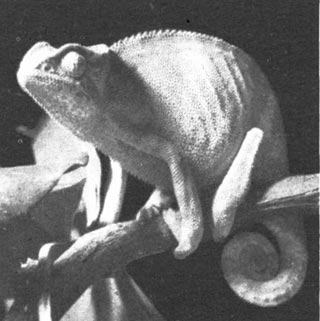
Caméléon
Parmi les Mammifères, outre les Écureuils fossoyeurs et la Roussette, grande Chauve-Souris frugivore, on admirera les Fennecs, petits Renards charmants et frileux, aux larges oreilles et aux yeux expressifs, qui ont la couleur des sables du Sahara, d’où ils sont originaires.
Des aquariums présentent la faune grouillante des mares de la France; dans une grotte artificielle, à l’extrémité de la salle, vivent des Protées, batraciens assez voisins des Salamandres, mais qui possèdent des branchies externes, une peau décolorée et des yeux non fonctionnels; ils sont originaires de certaines grottes obscures de la Yougoslavie.
Il faut souhaiter que les visites au Vivarium développent dans le public le goût pour l’observation des animaux dans leur milieu naturel; rappelons que les moeurs de beaucoup d’espèces animales, même de France, restent encore assez mystérieuses.
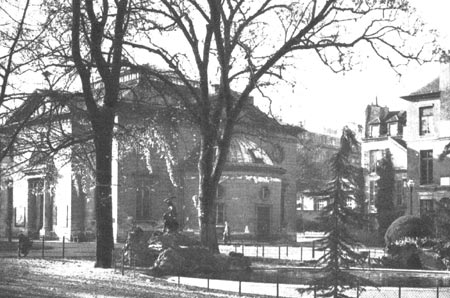
Le bassin des phoques au premier plan ; la maison de Cuvier à droite, le Grand Amphitheâtre à gauche
Faisant suite, le Grand Amphithéâtre (N° 2), construit sur les ordres de Buffon, a été restauré en 1954, et rétabli selon son ancien aspect; dans les laboratoires de chimie qui y furent jadis annexés, Gay-Lussac et Chevreul réalisèrent leurs plus importantes découvertes (voir plaques commémoratives sur la façade).
L’Hôtel de Magny (3), construit au début du XVllle siècle, acheté par Buffon en 1787, abrite la direction et l’administration du Muséum. Entre cet élégant bâtiment et, le bassin des Phoques, s’élèvent deux beaux hêtres pourpres (1875) et un grand platane d’Orient planté par Buffon en 1785 (4).
Le labyrinthe
Cette butte artificielle de deux hectares fut aménagée vers 1640. A son sommet (5) un belvédère en bronze (1786) porte un cadran solaire accompagné d’une optimiste devise : Horas non numero, nisi serenas (Je ne compte que les heures sereines).
Dans le labyrinthe subsistent quelques arbres anciens : deux érables de Crète plantés en 1702 par Tournefort (6), des ifs et des thuyas de 1735 (7), un grand platane hybride de 1785 (8) et surtout le célèbre cèdre apporté par Bernard de Jussieu en 1734, dont la hauteur atteint 20 mètres et la circonférence du tronc 4 mètres (9). Une colonne (10) orne le tombeau de Daubenton élevé en 1800.
Les Serres
Au pied du Labyrinthe, les Serres Carrées (1830) sont consacrées, l’une (11) aux plantes australiennes, l’autre (12) aux plantes désertiques (850 espèces de plantes grasses et 130 espèces de curieuses plantes-cailloux); près des serres achève de vivre le premier Paulownia planté en Europe (1834).
Le Jardin d’Hiver édifié en 1938 (13) est une grande- serre tempérée (15° à 18°) renfermant des végétaux des pays chauds, utiles ou décoratifs bananiers, bambous d’Indochine, palmiers, fougères géantes, plantes épiphytes, qui évoquent la luxuriance des forêts tropicales. Des serres plus petites, non ouvertes au public, contiennent plus de 17.000 espèces de plantes d’intérêt scientifique.
Jardin Alpin
En bordure du Jardin d’Hiver, le Petit Labyrinthe fut le premier jardin consacré, en France, aux plantes de montagne (1640); en face, s’étend le nouveau Jardin Alpin créé en 1931 et offrant au visiteur l’étonnante palette florale de 3.000 espèces originaires des Alpes, des Pyrénées, du Groenland, de l’Himalaya… On y a soigneusement respecté un Pistachier mâle (14) planté avant 1715 et qui aurait servi alors aux importantes recherches de Vaillant sur la sexualité des plantes.
École de botanique
Entièrement rénovée en 1954, elle a pour, but d’initier les étudiants, les praticiens, les horticulteurs, les amateurs de botanique, à l’étude des plantes susceptibles de vivre en plein air sous le climat parisien; elle présente les végétaux à la fois selon leur classification naturelie, leur utilité et leur milieu, en tenant compte des nécessités pratiques propres à chaque genre d’enseignement. Dans l’Ecole de Botanique, certaines plantes ont été groupées pour mettre en évidence les principaux types d’organes (feuilles, fleurs, fruits), classés méthodiquement, et on a reconstitué des peuplements végétaux caractérisant des milieux bien spéciaux tels que marécages, ou sables maritimes.
Le vieux Pin Laricio qui domine (17), le plus ancien de la France continentale, est issu de graines rapportées de Corse par Turgot (1774).
École de Génétique et Parc Écologique
Le Jardin des plantes utiles et médicinales a été transféré à l’extrémité de l’Ecole de Botanique. Sur son ancien emplacement va s’étendre une Ecole de Génétique destinée à montrer d’abord les résultats obtenus dans le passé, de façon souvent empirique, pour améliorer les espèces végétales utiles ou ornementales : légumes, céréales, fleurs ; elle mettra ensuite en évidence, par des exemples, les procédés récents permettant de produire expérimentalement des variétés nouvelles (fruits géant, fleurs doubles, etc.) et de sélectionner et maintenir ces variétés.
Le Parc Écologique, auquel on parvient ensuite, a été aménagé en 1938 dans l’ancienne Ecole de Botanique (1843) dont il subsiste quelques gros arbres ; là ont été reconstituées des associations végétales naturelles: bois de chênes verts méditerranéens, taillis de buis de type jurassien, forêt de bouleaux et, vers la Seine, sous-bois de l’lle de-France. Le Carré Brongniart (20), reconstruit en 1952, offre au visiteur l’attrait de sa pièce d’eau garnie de plantes aquatiques, entourée d’arbres et d’arbustes à branches pendantes, rampantes ou curieusement ramifiées et dominée par la célèbre statue du Dénicheur d’oursons, de Frémiet.
Les parterres
De la place Valhubert à la Galerie de Zoologie s’étend la magnifique perspective des parterres, bordés, sur 500 mètres de long, par deux allées de platanes. Dans ces massifs on peut, au fil des saisons, admirer d’avril à mai 70 variétés de pivoines, de mai à juin 260 variétés d’iris, de juin à octobre les 50 plus belles variétés nou vefles de roses et de juillet à octobre 100 variétés de pélargonium et 80 variétés de cannas. Enfin, d’août à octobre, s’étend le vaste Jardin du dahlia, où sont officiellement homologuées les nombreuses variétés nouvelles créées par les grandes firmes horticoles.
Près de la Galerie de Zoologie, le Bassin des Nymphéas remonte à 1640 (21). Entre les Galeries de Zoologie et de Minéralogie se dresse le premier Sophora (22) planté en France (1747); à côté sont présentées des variétés anciennes de roses de France, souches de la plupart des variétés actuelles (23).
Collection et galeries
Le Muséum possède des dizaines de millions d’échantillons d’histoire naturelle; beaucoup, parmi les plus précieux, ont été rapportés par nos grands voyageurs naturalistes, en particulier Tournefort, Commerson, Adanson au XVllle siècle, Bory de Saint-Vincent, Bonpland, d’Orbigny, Jacquemont, le Père David au XlXe. Les grandes expéditions françaises autour du monde, entre autres celles de Baudin, de Freycinet et de Dumont d’Urville, firent don aussi de leurs importantes récoltes au Muséum.
Mais, pour le visiteur, notre vénérable et glorieux établissement semble posséder trop de richesses, car elles sont accumulées dans des salles dont la présentation ne correspond plus à la conception du musée moderne où on ne montre au public que des objets de choix, en petit nombre, ordonnés d’une façon claire et accompagnés d’explications. Jusqu’à présent, la réorganisation des galeries, qui pourrait les rendre comparables et même supérieures aux autres grandes galeries d’Europe, n’a pu être faite, faute de moyens financiers suffisants.
Cependant, dans leur état actuel, elles contiennent des documents précieux, parfois uniques, qui ne peuvent laisser indifférents les véritables amateurs de Sciences Naturelles.
Galerie de Zoologie
Cette Galerie, inaugurée en 1889, est présentée selon des conceptions anciennes; des animaux appartenant à des groupes très différents sont souvent réunis dans les mêmes salles.
Rez-de-chaussée : Salle en façade sur le Jardin : 1. Grands Singes anthropoïdes proches de l’homme. 2. Nasiques (singes à long nez). 3. Lémuriens de Madagascar, primates à caractères primitifs les rapprochant de la souche ancestrale des Singes et de l’Homme.
Vestibule nord : 4. Singes d’Amérique et d’Asie ; 5. Remarquable statue de Buffon par Pajou (1776).
Première Galerie et Hall central : 6. Mammifères primitifs spéciaux a” l’Australie (Monotrèmes, Marsupiaux) ; 7. Rhinocéros blanc d’Afrique ; 8. Poissons d’eau douce, Reptiles et Batraciens de France ; 9. Les Poissons : anatomie, morphologie, etc. (vitrines en cours d’organisation) ; 10. Porc-épic ; 11. Grand fourmilier ; 12. Oryctérope, mammifère d’Afrique, mangeur d’insectes.
Vestibule sud : 13. Quelques oeuvres du sculpteur animalier Pompon (1855-1933). 14. Entrée de l’amphithéâtre de Zoologie.
Premier étage : Vestibule sud : 1 Huîtres perlières et perles. 2. Élégantes coquilles d’Argonautes, Coraux, modèles en cire de Mollusques.
Salle des Oiseaux: 3. Colibris. 4. Calaos à gros bec. 5. Oiseaux de Paradis. 6. Remarquable horloge astronomique de 1785. 7. Perroquets. 8. Petits oiseaux nectarivores.
Vestibule nord : 9. Beaux squelettes d’Éponges siliceuses. 10. Oiseaux de l’Antarctique (Exp. Charcot, 1903-1905).
Deuxième galerie : 11. Faisans d’Asie aux magnifiques couleurs. 12. Mammifères et Oiseaux rarissimes ou récemment disparus (pièces conservées à l’abri de la lumière, accessibles aux naturalistes sur demande). 13. Salle de cours de Zoologie (entrée au rez-de-chaussée, façade sud). 14. Curieux moulages galvanoplastiques de Reptiles et de Batraciens. 15. Spécimen unique d’une Tortue, actuellement disparue, de l’lle Rodriguez (Océan Indien), conservée avant la Révolution au cabinet de curiosités de l’Abbaye de Sainte-Geneviève. 16. Grande Tortue-luth montrant le squelette sous la carapace. 17. Mouflon à manchettes. 18. Pattes d’Aepyornis de Madagascar, le plus grand des Oiseaux connus, disparu au XVIe siècle. 19. Casoar. 20. Balaeniceps (Becen-sabot).
Deuxième étage : Troisième galerie : 1.Industrie de la nacre. 2. Les Huîtres et leur culture. 3. Les Termites et leurs dégâts.
En sortant de la Galerie de Zoologie, on trouve à droite un long bâtiment (24), construit en 1841, qui renferme les collections de Minéralogie et Paléontologie végétale, ainsi que la Bibliothèque Centrale du Muséum, la plus importante du monde pour les sciences de la Nature.
Dans le prolongement de la Bibliothèque, la maison de l’intendant du Jardin du Roi (25) fut achetée et embellie par Buffon, qui y mourut en 1788.
La bibliothèque
Consacrée aux Sciences Naturelles et à leurs applications pratiques, construite pour 30.000 volumes, riche aujourd’hui de 500.000 ouvrages, elle reçoit près de 4.000 périodiques et possède les comptes rendus de multiples expéditions scientifiques. L’édification d’une nouvelle bibliothèque, le long de la rue Geoffroy-Saint-Hilaire, va enfin permettre à toutes ces richesses de connaître un cadre digne d’elles.
Dans son-fonds ancien se trouvent les bibliothèques personnelles de Cuvier, Chevreul, Ch. Bonaparte et de nombreux manuscrits de Buffon, Lamarck, Cuvier, etc. Elle conserve environ 5.000 gouaches d’animaux et de plantes constituant la très célèbre collection des Vélins du Roi, commencée au XVIIe s. et continuée jusqu’à nos jours; ces oeuvres, très fragiles, ne peuvent être consultées qu’exceptionnellement.
Les artistes, en particulier les décorateurs, utilisent souvent, comme source d’inspiration, les somptueux ouvrages illustrés de la Bibliothèque et sa collection iconographique de plantes et d’animaux (estampes, dessins, photographies).
La Bibliothèque st ouverte à tous; ses ouvrages et revues peuvent être consultés librement sur place, mais ne sont pas prêtés à domicile. Dans -la salle de travail se trouvent, à droite, le bureau de renseignements et de demandes de livres, au centre et à gauche les fichiers des périodiques et des ouvrages; ceux-ci sont classés par noms d’auteurs et par matières.
La Bibliothèque est chargée de la vente des Annales, Archives, Mémoires, Bulletin du Muséum et d’une collection de biographies : « Les Grands Naturalistes Français », pouvant intéresser un très large public.
Galerie de minéralogie
Dans le vestibule, on remarque une magnifique table de marbre incrusté de minéraux de couleur, don de Louis XV, et un énorme échantillon de cristal de roche rapporté du Valais par Bonaparte. A droite en entrant, dans une petite salle obscure, sont présentés des minéraux devenant luminescents sous l’action du rayonnement ultraviolet.
Pénétrons dans la Galerie, dont l’aménagement actuel est dû à Alfred Lacroix. Elle est bordée, à droite et à gauche, par quatre tribunes longitudinales constituant un premier étage consacré à la Géologie; au, rez-de-chaussée, la plupart des vitrines axiales contiennent également des collections géologiques; par contre, les vitrines placées au pied des tribunes, au pourtour de la Galerie, renferment uniquement des collections minéralogiques.
On admirera d’abord des objets d’art façonnés dans des pierres rares et provenant en partie des anciennes collections royales ; de même origine sont les diamants, saphirs et topazes présentés, avec des pépites d’or et de platine, dans la vitrine verticale au pied de la première colonne à droite. De part et d’autre de la porte d’entrée a été placée la collection Pierpont-Morgan groupant des minéraux d’Amérique choisis pour la magnificence de leurs couleurs et de leurs formes.
Les vitrines du pourtour de la Galerie, au pied des tribunes, doivent être examinées en commençant par la gauche; elles contiennent d’abord les éléments chimiques natifs : or, platine, soufre, etc., puis les combinaisons chimiques : sulfures, oxydes, carbonates, sulfates, silicates, etc., enfin les combustibles minéraux.
Au milieu de la Galerie se dressent les statues de Georges Cuvier et de l’abbé Haüy; celui-ci, vers 1789, ayant brisé un cristal de spath, constata que les fragments s’étaient clivés en donnant des formes géométriques simples ; de cette observation des clivages, il déduisit les lois fondamentales de la cristallographie.
Au pied de la statue de Haüy, une grosse metéorite (pierre tombée du ciel) trouvée près de Grasse, est constituée par des alliages de fer et de nickel; au pied de la statue de Cuvier, on remarquera le bloc de fer météorique provenant de Tamentit, au Sahara. Les grandes vitrines qui s’élèvent au centre de la Galerie contiennent les principaux types de minerais métalliques utilisés dans l’industrie et de gros échantillons de minéraux remarquablement cristallisés.
Galerie de géologie
Les collections de Géologie occupent les vitrines horizontales dans l’axe de la galerie, ainsi que les quatre estrades le long des murs.
Les premières vitrines axiales sont encore du domaine de la Minéralogie (roches éruptives). La plupart des vitrines suivantes présentent des roches et fossiles caractéristiques des différentes époques géologiques, depuis le Précambrien, remontant très approximativement à un milliard d’années (vitrine 2), jusqu’au Quaternaire et à l’époque actuelle (vitrine 161). La visite se déroule en suivant le numérotage des vitrines, d’abord du côté de la rue de Buffon, ensuite du côté du Jardin. On remarquera, dans la vitrine 25, une dalle cambrienne portant de nombreuses empreintes de trilobites, crustacés primitifs disparus.
Les deux estrades du côté du Jardin sont consacrées, la première aux roches et fossiles caractéristiques du Tertiaire du Bassin de Paris (échantillons classés chronologiquement), la seconde aux fossiles tertiaires des faluns (roches meubles à coquilles marines) de l’Anjou, de la Touraine et du Bordelais. Les vitrines verticales de cette estrade contiennent une documentation relative à. la Géologie appliquée.
Les estrades du côté rue de Buffon présentent des roches et fossiles de la France d’Outre-Me r et des Etats associés ; la première est consacrée aux territoires s’étendant de l’Afrique du Nord à l’Afrique Equatoriale Française, la seconde à Madagascar et ses dépendances, à la Côte des Somalis, aux Etats d’Indochine et aux possessions françaises d’Amérique et d’Océanie.
Galerie de paléobotanique
Les collections de végétaux fossiles, d’une rare valeur’ scientifique, formées, il y a plus d’un siècle, par Adolphe Brongniart, ont été ultérieurement complétées et donnent à la galerie son véritable intérêt.
Celle-ci, située dans le prolongement de la Galerie de Minéralogie, présente, dans ses vitrines axiales, de beaux échantillons de végétaux fossiles d’époques diverses.
A droite en entrant, des vitrines verticales, disposées en cinq travées, contiennent des échantillons rangés selon l’ordre systématique, depuis les Dicotylédones jusqu’aux Algues.
Le visiteur, arrivé à l’extrémité de la galerie, pourra parcourir, en sens inverse, les cinq travées du. côté du Jardin, où sont présentées les plantes fossiles dans leur ordre d’apparition, depuis le Dévonien jusqu’au Quaternaire.
Au centre, une vitrine verticale et deux vitrines horizontales contiennent des végétaux à l’état silicifié ; grâce à cette minéralisation, ils ont conservé en partie leur structure, qu’il est possible d’étudier presque aussi bien que sur les plantes vivantes. On remarquera, en particulier, dans la vitrine centrale, de très belles coupes transversales de Psaronius, tiges arborescentes de. Fougères du Permo-Carbonifère (époque remontant très approximativement à 200 millions d’années).
Cour d’honneur l’Hôtel de Magny
Celui-ci, construit par l’architecte Bullet au début du XVIIIe siècle pour le marquis de Vauvray, fut acheté par Buffon en 17879 habité ensuite par Daubenton, Lacépède, Fourcroy… Il abrite aujourd’hui l’Administration du Muséum.
Galerie d’anatomie comparée et de paléontologie
Elle fut construite en 1896 et a été prolongée en 1958 ; son rez-de-chaussée est consacré à l’Anatomie Comparée; cette science, développée d’abord au Muséum par Cuvier et Et. Geoffroy Saint-Hilaire, a permis de rénover la classification des animaux et fourni des bases à la Paléontologie et aux théories de l’Evolution.
La salle ne contient que des Vertébrés ; elle est entourée de vitrines murales verticales qui, du côté de la rué de Buffon, présentent une sérié de squelettes de Mammifères, de Batraciens, et de Poissons; les premières vitrines permettent de comparer l’Homme avec les autres Primates (remarquer les crânes de certains petits singés d’Amérique ayant une apparence extérieure presque humaine) bien qu’ils appartiennent à un groupe très éloigné de nous zoologiquement.
Du côté du Jardin, à partir du fond de la salle, on remarquera des séries comparatives de viscères de Vertébrés : disposition d’ensemble de la cavité viscérale, appareils digestifs, respiratoires, circulatoires et nerveux, productions dermiques (peau, carapace. cornes), organes des sens et de la reproduction ; les 7 dernières vitrines sont réservées aux embryons et aux monstres.
Dans la partie axiale de la salle sont exposés des squelettes de grande dimension; on remarquera, presque au centre, entre les vitrines des Reptiles et Oiseaux, un des rares squelettes connus de la Rhytine de Steller, Mammifère aquatique du détroit de Béring disparu depuis la fin du. XVIIIe siècle. Récemment, la Galerie s’est enrichie du Coelacanthe, célèbre poisson archaïque quel’on croyait disparu depuis 300 millions d’années et qui fut retrouvé vivant dans le canal de Mozambique il y a quelques années.
Dans la galerie de paléontologie, au 1er étage, A. Gaudry et Marcellin Boule ont placé vers l’entrée les animaux fossiles les plus anciens (Primaire) et, à l’extrémité, les plus récents (Quaternaire). Cette disposition met en évidence l’Evolution des êtres vivants, marquée par la complication progressive et la multiplication des espèces au cours des temps géologiques.
Les vitrines horizontales sont réservées aux Invertébrés, les verticales aux Vertébrés, parmi lesquels les Mammifères du Tertiaire français ont une haute valeur scientifique. Dans l’axe de la galerie domine le moulage d’un célèbre reptile du Jurassique américain : le Diplodocus long environ de 25 mètres. De part et d’autre de son socle, on remarquera une tête d’lchthyosaure avec des lambeaux de peau fossilisés et le précieux squelette du Lystrosaurus; puis à gauche et à droite de celui-ci, deux vitrines consacrées aux grands insectes du Carbonifère de Commentry (Allier). A droite (côté Jardin), la vitrine murale des .Vertébrés du Lias montre les restes d’un reptile volant, le Campylognatus et de belles »empreintes de poissons du Liban.
A gauche (côté rue de Buffon) on peut voir les poissons du Tertiaire du Monte Bolca et, un peu plus loin, les célèbres ossements du gypse de Montmartre qui permirent à Cuvier, en 18 12, les premières reconstitutions scientifiques de Mammifères disparus, basées sur l’Anatomie Comparée. L’extrémité de la salle est dominée par le grand squelette d’Éléphant Méridional du Quaternaire ancien de Dur-fort (Gard). A côté, une grande vitrine rassemble des ours, des lions et autres bêtes fauves contemporaines, en France, de l’homme des cavernes, qui a dû souvent engager le combat contre elles.
Ainsi s’achève auprès des grands fossiles une promenade riche en visions de toute nature, génératrice de réflexions aussi. En contemplant les multiples squelettes des espèces éteintes, le visiteur pourrait être tenté de formuler le voeu qu’un musée de l’Evolution place un jour en exergue ces richesses exceptionnelles de nos collections nationales, entassées aujourd’hui, faute de crédits, dans des locaux insuffisants, et non ou à peine chauffés, hors de portée d’expositions véritablement didactiques, qui pourraient mettre enfin pleinement en évidence l’importance des grandes lois dont ces pièces sont les preuves.
Informations pratiques pour visiter le Jardin des Plantes de Paris
Le jardin offre un cadre paisible en plein cœur de Paris, idéal pour se détendre, se promener ou pique-niquer. Ses allées ombragées, ses parterres de fleurs bien entretenus et ses serres exotiques en font un lieu de détente exceptionnel. Le jardin abrite une vaste collection de plantes, avec des espèces venant des quatre coins du globe. C’est un lieu idéal pour les amateurs de botanique et de jardinage.
Quelle est la station de métro pour le Jardin des Plantes ?
La station de métro la plus proche pour accéder au Jardin des Plantes à Paris est la station “Gare d’Austerlitz”. Cette station est desservie par les lignes 5 et 10 du métro parisien, ainsi que par le RER C. Une autre option proche est la station “Jussieu”, desservie par les lignes 7 et 10 du métro.
- Gare d’Austerlitz (lignes 5 et 10, RER C) : Depuis cette station, il suffit de marcher quelques minutes pour atteindre l’entrée du jardin.
- Jussieu (lignes 7 et 10) : De cette station, une courte promenade vous mènera également au Jardin des Plantes.
Est-ce que le Jardin des Plantes est gratuit ?
Oui, l’entrée au Jardin des Plantes de Paris est gratuite pour le public. Vous pouvez profiter des espaces extérieurs, des allées, des jardins thématiques et de l’ambiance paisible sans frais d’entrée. Cependant, certaines attractions spécifiques à l’intérieur du jardin, comme les Grandes Serres, la Ménagerie (le zoo), la Grande Galerie de l’Évolution, et les expositions temporaires, peuvent nécessiter l’achat de billets d’entrée.
Voici un résumé des principales attractions payantes :
- Grandes Serres : Ces serres abritent des collections de plantes exotiques et tropicales, offrant une expérience immersive dans différents climats.
- Ménagerie : Ce zoo historique présente une variété d’animaux, y compris des espèces rares et menacées.
- Grande Galerie de l’Évolution : Cette galerie propose des expositions fascinantes sur l’évolution et la diversité de la vie sur Terre.
- Expositions Temporaires : Des expositions spéciales peuvent être organisées régulièrement et peuvent également nécessiter un billet d’entrée.
Pour ces visites payantes, il est souvent possible d’acheter des billets à l’avance en ligne, ce qui peut être pratique pour éviter les files d’attente. En résumé, tandis que l’accès général au jardin est gratuit, certaines expériences spécifiques à l’intérieur du Jardin des Plantes nécessitent un billet payant.
Quand peut-on visiter le Jardin des Plantes ?
Le Jardin des Plantes de Paris est ouvert au public tous les jours de l’année. Cependant, les horaires d’ouverture peuvent varier en fonction de la saison et des différentes sections du jardin. Voici un aperçu général des horaires :
Horaires du Jardin
- En été (d’avril à septembre) : 7h30 – 20h00
- En hiver (d’octobre à mars) : 8h00 – 17h30
Horaires des Attractions Spécifiques
Les horaires des différentes attractions payantes à l’intérieur du Jardin des Plantes peuvent varier. Voici quelques exemples :
Grandes Serres :
- En été : 10h00 – 18h00
- En hiver : 10h00 – 17h00
Ménagerie, le zoo du Jardin des Plantes :
- En été : 9h00 – 18h00
- En hiver : 9h00 – 17h00
Grande Galerie de l’Évolution :
- Du mercredi au lundi : 10h00 – 18h00
- Fermée le mardi
Galeries de Paléontologie et d’Anatomie Comparée :
- Du mercredi au lundi : 10h00 – 18h00
- Fermées le mardi
Ces horaires peuvent être sujets à des modifications, notamment lors de jours fériés ou d’événements spéciaux. Il est toujours conseillé de vérifier les horaires exacts sur le site officiel du Muséum national d’Histoire naturelle avant votre visite pour éviter toute déception.
Fermetures Exceptionnelles
Certaines sections du Jardin des Plantes peuvent être fermées pour entretien, travaux, ou événements spéciaux. Vérifiez les annonces et informations actualisées en ligne ou contactez directement le jardin avant de planifier votre visite.
